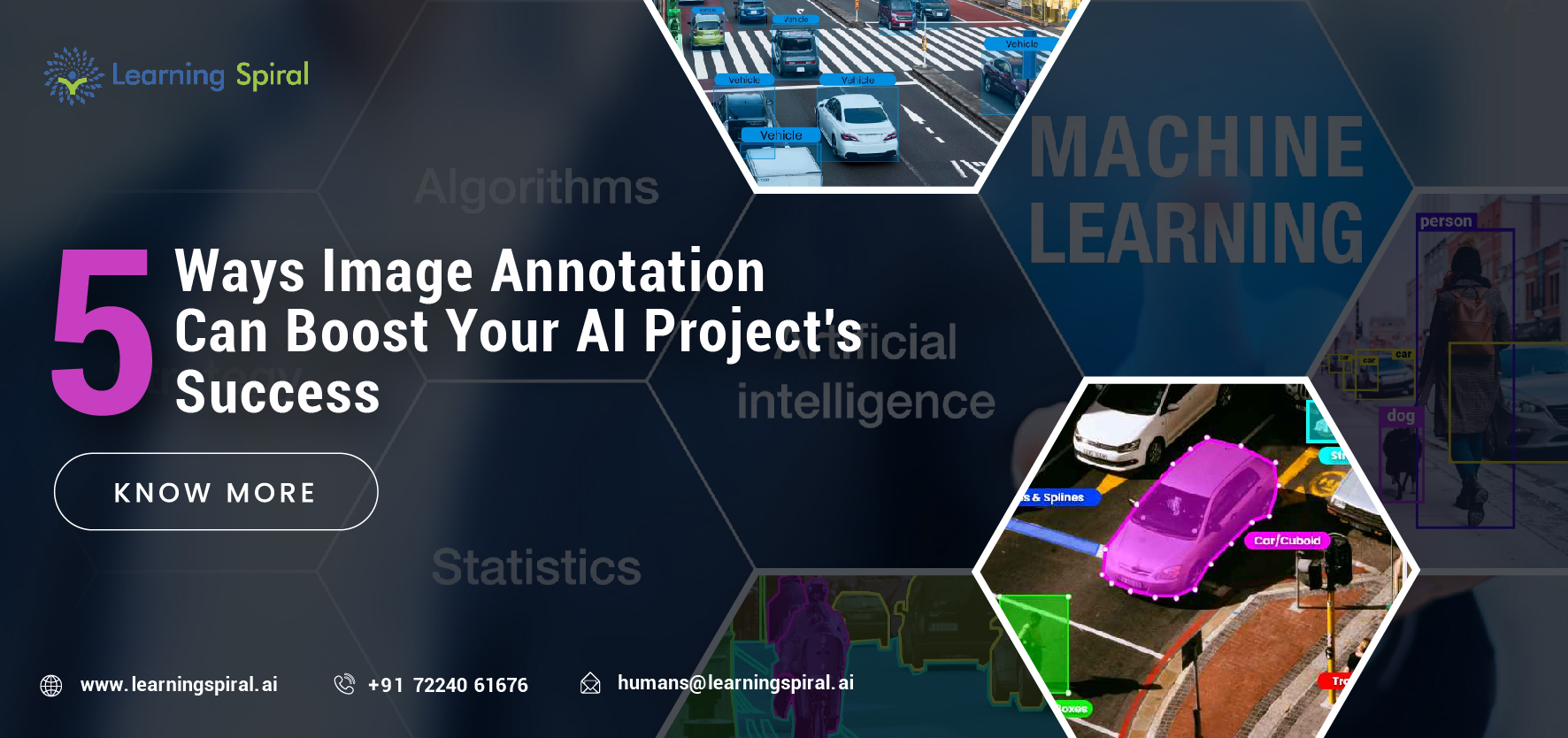
Data plays a crucial, if not the most ultimate, role in artificial intelligence. The quality and quantity of data used to train machine learning models directly influence their performance and accuracy. When it comes to image-based AI applications, image annotation plays an essential in unlocking the true potential of your project. Here’s how effective image annotation can significantly boost your AI project’s success:
1. High-Quality Training Data:
Think of image annotation as the meticulous process of labeling images with relevant information. This information could be bounding boxes around objects, pixel-level segmentation of different regions, or even detailed descriptions of the scene depicted. High-quality annotated data serves as the building blocks for your AI model.
The clearer and more accurate the labels are, the better the model understands the visual world and learns to perform the desired tasks.
For instance, consider an AI model designed to identify different types of cars in images. Poorly annotated data with inaccurate or missing classifications would lead to the model struggling to differentiate between cars, bicycles, or even pedestrians.
Conversely, well-annotated data with precise labels empowers the model to recognize various car types efficiently, leading to a more robust and reliable application.
2. Enhanced Accuracy and Reduced Bias
Image annotation acts as a crucial quality control measure in AI development. The labeling process helps identify inconsistencies, ambiguities, and potential biases within the training data. By meticulously addressing these issues, you can significantly improve the accuracy of your AI model.
Bias in data can arise from various factors, such as the demographic makeup of the annotators or the types of images used for training. Image annotation allows for the identification and correction of such biases.
For example, an AI model trained on images depicting mostly sunny weather might struggle to recognize objects in rainy conditions. Through targeted annotation of diverse weather scenarios, the model’s accuracy can be broadened.

3. Unlocking the Power of Specific AI Applications
The type of image annotation chosen depends on the specific applications you’re targeting. From basic object detection using bounding boxes to detailed semantic or instance segmentation, different techniques cater to diverse needs.
- Object detection with bounding boxes is ideal for tasks like identifying and tracking objects in self-driving cars or identifying products in retail applications.
- Semantic segmentation allows AI models to understand the content of an entire scene, pixel by pixel, useful for tasks like medical image analysis or autonomous robots navigating complex environments.
- Instance segmentation enables the model to distinguish individual instances of objects, like people in a crowd, critical for applications like facial recognition or pose estimation.
By choosing the appropriate image annotation technique, you ensure your AI model is trained on data that reflects the real-world scenarios it will encounter, leading to improved performance in its specific domain.
4. Streamlined Development and Faster Time to Market
Investing in quality image annotation can actually save you time and resources in the long run. With accurate and well-labeled data, you can train your AI model more efficiently, reducing the need for extensive revisions and troubleshooting later in the development process.
Furthermore, high-quality training data allows you to achieve the desired level of accuracy faster, accelerating your time to market. This translates to a competitive edge in a rapidly evolving AI landscape, where innovative solutions are constantly emerging.
5. Building Trust and Transparency:
The field of AI is increasingly focusing on explainability and transparency. Image annotation plays a vital role in this by providing a clear link between the visual data and the model’s decisions. By analyzing annotated images and the corresponding labels used for training, developers can better understand how the AI model is interpreting the world.
This explainability fosters trust in the AI system. For example, in a medical imaging application, understanding how the model arrived at a specific diagnosis based on annotated medical images allows for better human-AI collaboration and improved decision-making.
Conclusion:
Image annotation is not just a technical task; it’s a strategic investment in the success of your AI project. By prioritizing high-quality image annotation, you lay the foundation for building robust, accurate, and reliable AI models that can revolutionize various industries.
So, the next time you embark on an AI project, remember – success is often found in the details, and accurate image annotation is a detail worth focusing on.

